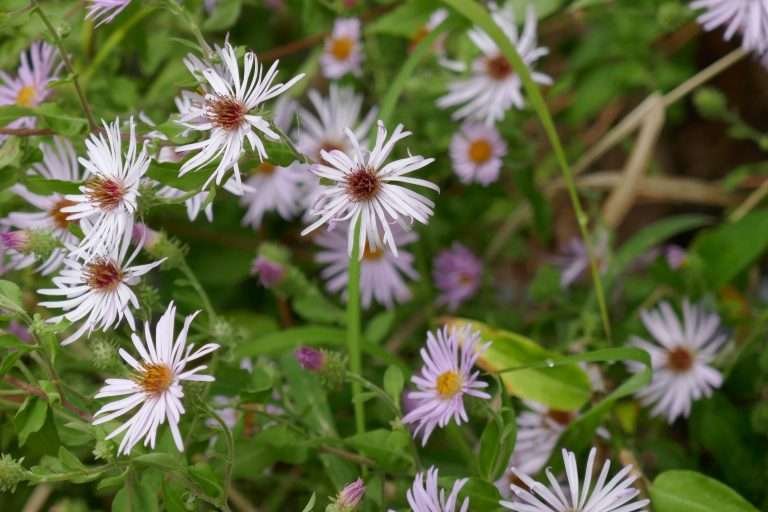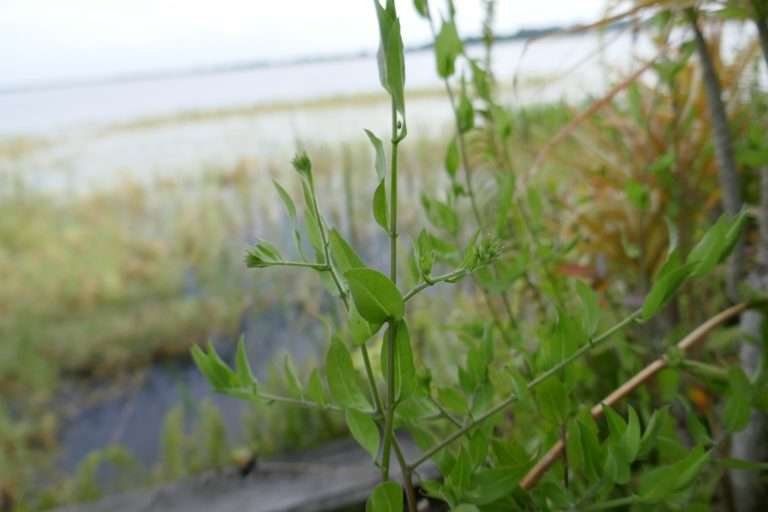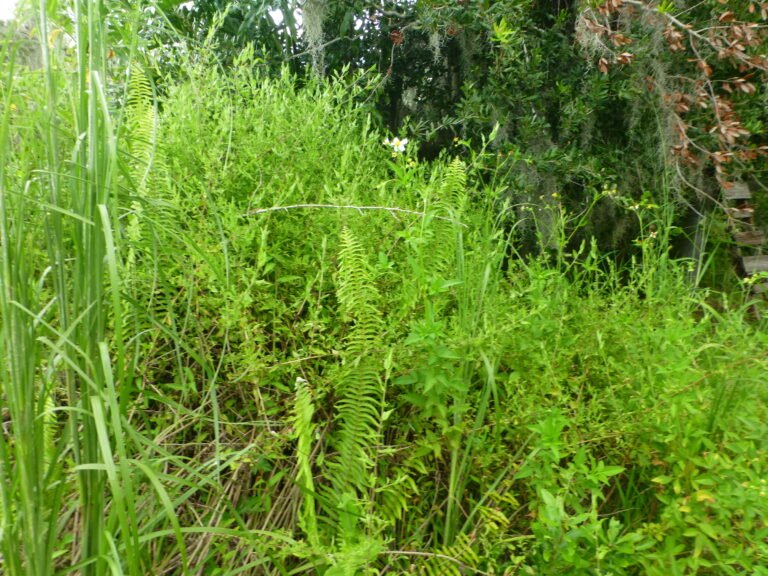
Symphyotrichum carolinianum
(Climbing Aster)

Common Names, Latin Name and Family
Climbing aster, Carolina aster, and wild aster.
Its Latin name is Symphyotrichum carolinianum
Climbing aster is in the Asteraceae, or aster, family.
Form
Climbing aster is a deciduous wildflower that grows like a trailing shrub.
Its length reaches from 10 to 20 feet. It does have woody growth upon maturity.
A better name for this aster would be trailing aster because it really doesn’t climb by tendrils, like most vines do, so it sprawls and drapes itself around nearby vegetation. It can be trained upon a trellis or fence for support.
It is deciduous, but rarely loses its leaves for more than a few weeks during our coldest time of the year. In frost free areas it will tend to keep its leaves.

Leaves
The leaves are alternate.
Their shape is generally elliptic to lanceolate with entire margins. Some leaf bases are clasping around the main stem. The apex (leaf tip) is very sharply pointed.

Flowers
The flowers appear all year, but are most prolific during late fall and early winter.
The flowers are approximately an inch across and have a very sweet fragrance.

Habitat
Climbing asters grow in moist areas like wet woods, stream banks, lake margins and other wet areas such as drainage ditches and wet fence rows.
Native Range
Climbing aster’s native range is Florida, Georgia, Mississippi, South Carolina and North Carolina.
Landscape Use
In the home landscape it grows in full sun with average to moist soils. It needs a good source of sunlight in order for it to produce flowers.
It does well along the edges of natural areas where it can clamber and trail along nearby vegetation. It can also be kept trained on a trellis.
The best scenario is to plant it near a water source, or wet problem area such as a drainage ditch, so that it won’t require any watering.

Wildlife Use
The flowers are a source of nectar for many insects including bees, beetles, butterflies, flies, and wasps.
The rambling, and sprawling, growth can provide areas of cover for some wildlife.
Remaining seed heads may be eaten by small songbirds in winter when there are few seeds available for them to eat.

Propagation
Can be grown easily from seed, naturally occurring seedlings can be transplanted and root cuttings can be taken. For root cuttings trace the stem to the ground to locate a piece with at least a few roots in order to guarantee better survival.
If you’d like to grow this shrub from seeds I sell them at my Ebay Store.